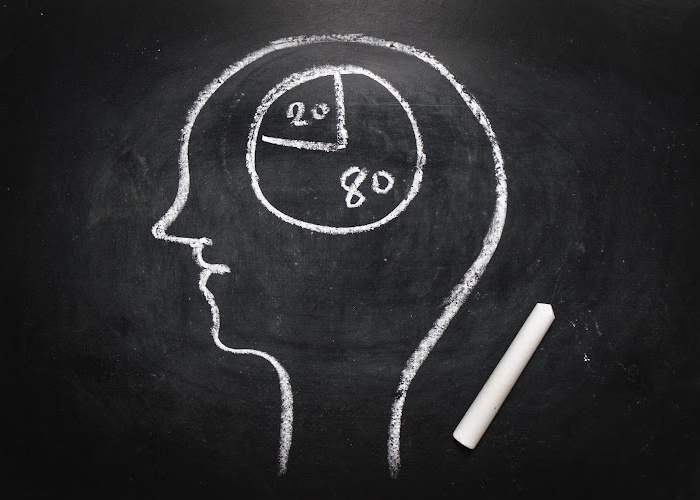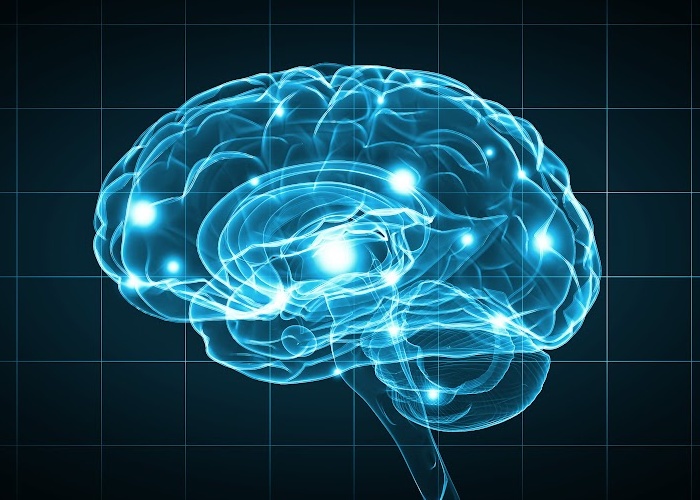It's crucial to know that students with autism and ADHD need special study strategies. Autism…

EDS and Autism: Exploring the Dual Diagnosis
Have you ever wondered about the intricate link between Ehlers-Danlos Syndrome (EDS) and Autism Spectrum Disorder (ASD)?
With recent studies shining light on the likelihood of a dual diagnosis, it’s time to delve deeper into the relationship between these two conditions. EDS, a group of connective tissue disorders, and autism, a developmental disorder with a spectral range of symptoms, both carry significant genetic components that may intersect more often than we realize.
Understanding these connections can empower you – whether as a healthcare provider, educator, or family member – to better support individuals facing this dual challenge.
As we explore the overlap of genetic disorders and autism, and their potential comorbidities, you’ll gain insights into how the combination of autism and connective tissue disorders can affect those diagnosed.

Understanding Ehlers-Danlos Syndrome (EDS)
If you’re exploring the realm of connective tissue disorders, you’ve likely encountered Ehlers-Danlos Syndrome (EDS). This complex condition not only challenges those who live with it but also fascinates the medical community with its diverse presentation and genetic intricacies.
Defining Ehlers-Danlos Syndrome
Ehlers-Danlos Syndrome represents a group of connective tissue disorders that manifest in a variety of ways, most noticeably affecting the skin, joints, and vascular structures. Taking on many forms, EDS symptoms vary in severity, ranging from mild joint hypermobility to more life-altering conditions. Your understanding of EDS is crucial, as it can significantly impact your approach to eds treatment and management.
Clinical Manifestations of EDS
When it comes to clinical signs, EDS presents a hefty list of symptoms, pointing to a hypermobility spectrum disorder. Among these, chronic pain in EDS severely hampers the quality of life, with joint hypermobility leading to frequent dislocations and skin anomalies.
While eds diagnosis can be challenging, awareness of these manifestations can guide better detection and interventions.
- Excessively stretchy skin
- Fragile skin that heals poorly
- Joints that extend beyond the normal range (joint hypermobility)
- Chronic joint pain and frequent dislocations
- Gastrointestinal complications in some EDS types
- Co-morbid conditions such as MCAS and POTS
The Genetic Basis of EDS
The genetics of Ehlers-Danlos Syndrome are as complex as its symptoms. With its roots deeply embedded in connective tissue genetics, EDS inheritance patterns and eds genetic diagnosis play cornerstone roles in managing the syndrome.
In particular, the genetic links between EDS and autism draw significant attention, fostering a deep dive into the shared connective tissue characteristics that pertain to both conditions.
| EDS Classification | Genetic Cause | Typical Symptoms |
|---|---|---|
| Hypermobile EDS (hEDS) | Unknown (suspected genetic markers) | Joint hypermobility, chronic pain, skin hyperextensibility |
| Classical EDS | Collagen Type V mutations | Highly stretchy skin, widened atrophic scars |
| Vascular EDS | Collagen Type III mutations | Fragile organs, thin skin, visible veins |
The Autism Spectrum: Symptoms and Diagnoses
When you’re exploring the world of autism spectrum disorder (ASD), you’ll find yourself immersed in a diverse range of neurodevelopmental disorders marked by a variety of autism symptoms.
The signs and experiences can vary widely, making autism in children particularly unique from one individual to the next. Spotting autism signs early on can be pivotal in getting the support needed to navigate this condition.
Imagine a spectrum where on one end, some individuals with ASD might need minimal support, showcasing subtle difficulties in social interactions or specific interests. On the other end of the spectrum, you’ll encounter those who face substantial challenges, perhaps requiring more comprehensive assistance. This is why a careful and thorough autism diagnosis process is crucial.
What should you expect during an autism evaluation? Let’s delve into the steps typically involved in an ASD diagnosis:
- An in-depth look at the child’s developmental history, including milestones and parent observations.
- Behavioral evaluation, where healthcare providers observe the child’s interactions and play.
- Possible genetic testing, especially if there are indications of intellectual disability or atypical physical traits.
It’s noteworthy that genetics often play a role in ASD. Research has indicated that some mothers carrying genetic variations associated with autism may pass on these traits to their children. This genetic aspect underlines the importance of family medical history in understanding the potential for autism spectrum disorder within families.
| Autism Signs | Age of Onset |
|---|---|
| Social communication challenges | As early as 6 months |
| Repetitive behaviors | As early as 1-2 years |
| Restrictive interests | Varies, often preschool years |
Early recognition of autism signs contributes to building tailored support systems, creating a nurturing environment for individuals with ASD to thrive. Understanding the nuances of autism is the first step toward a more inclusive society.
Whether you’re a parent, educator, or healthcare professional, recognizing and respecting the complexity of the autism spectrum is vital for empowering those within the ASD community.

EDS and Autism: The Connection and Commonalities
Emerging research is revealing the significant connections between Ehlers-Danlos Syndrome (EDS) and Autism Spectrum Disorder (ASD), suggesting that the prevalence of dual diagnoses is more common than previously acknowledged.
Whether you’re a healthcare provider, a patient, or simply curious about the link between EDS and autism, understanding these connections is pivotal for advancing comprehensive care and support strategies.
Comparing EDS and Autism Prevalence Rates
Studies have indicated a notable link between eds and autism, with disparities in prevalence data underscoring the necessity for greater awareness.
With autism’s prevalence in the general population standing at about 2.6% among young boys, it’s particularly striking to note that among those with EDS or related hypermobility spectrum disorders, the prevalence rate of autism jumps to approximately 6%.
This significant increase in the autism prevalence within the EDS community points towards a potential genetic or neurodevelopmental nexus warranting further investigation.
Shared Genetic Pathways in EDS and Autism
When delving into autism and genetic disorders, including EDS, shared genetic pathways become apparent. Autism and collagen disorders, along with other connective tissue anomalies, offer a window into the complex workings of our genetic makeup.
Genetics play a crucial role in the development of these conditions, and recent advances in autism and genetic research have begun to unravel the shared molecular pathways that may contribute to both EDS and ASD.
The exploration of eds autism genetics is shedding light on possible common origins, stressing the importance of genetic research in understanding these conditions better.
Overlap of Sensory Processing and Joint Symptoms
Individuals with autism often experience sensory processing disorders, and those with EDS commonly endure joint hypermobility and related symptoms. This overlap in sensory sensitivity and autism, as well as autism and joint hypermobility, prompts healthcare professionals to look for an eds and autism spectrum disorder co-occurrence more attentively.
Understanding the intersection of these symptom profiles is crucial for providing tailored interventions and support that can greatly benefit those affected by both conditions.
Diagnostic Challenges for Dual Diagnosis
The process of pinpointing both EDS and autism symptoms can be laden with hurdles due to the considerable symptom overlap and variable clinical presentations. Navigating these complexities requires vigilance in recognizing the early signs of autism and the more subtle indicators of EDS. Let’s delve into the intricacies of diagnostic efforts and the strides being made toward refining this process.
Recognizing Signs of Both EDS and Autism
When assessing for EDS symptoms in autism, healthcare providers sometimes contend with a diagnostic maze, as features such as joint hypermobility, pain, and sensory challenges are shared by both EDS and autism. It’s paramount to recognize these overlapping symptoms for a timely and accurate diagnosis. In females, specifically, understanding EDS in individuals with autism might necessitate a more nuanced examination as their symptoms can be less evident.
Barriers to Timely Diagnosis
Despite the expanding base of knowledge surrounding eds and autism diagnosis, barriers persist. These include limited awareness among professionals and the community alike, as well as the intricate nature of diagnosing EDS in autism, which often lacks clear-cut screening tools. Additionally, barriers to EDS diagnosis may entail lengthy investigation periods that delay interventions offering relief to those with autism treatment needs.
Towards a Better Diagnostic Framework
An integrated diagnosis approach is in the works, seeking to refine the diagnostic framework for EDS and autism. The Beighton Scoring System is shedding light on early signs of EDS, prompting genetic assessments where indicated. These advancements signify strides toward improvement in EDS and autism diagnosis, opening doors to effective therapies and life-changing interventions.
A comprehensive understanding, bolstered by improved diagnostic measures, is paving the way for progress in eds and autism interventions. By integrating recognition strategies for EDS symptoms in autism into regular healthcare screenings, patients will encounter fewer impediments in their journey to diagnosis, potentially experiencing notable improvements in their quality of life through timely and fitting eds treatment for autism implementations.
Management and Support for Individuals with EDS and Autism
When tackling the reality of managing EDS and autism, it’s essential to adopt a holistic approach catered to the unique needs that stem from this dual diagnosis. The aim is to enhance the quality of life by integrating eds and autism treatment, offering support for comorbid conditions and crafting a targeted care plan that addresses both physical and neurological complexities.
Integrating Treatment Methodologies for a Dual Approach
Combining therapeutic methods is crucial in delivering effective support. This may involve a mix of traditional physical therapies for EDS management, such as joint stabilization, alongside approaches tailored for autism which may focus on behavioral and communication therapies.
Access to innovative treatment options for eds and autism is increasing, with interventions like low-frequency repetitive transcranial magnetic stimulation (rTMS) showing promise for addressing autonomic nervous system dysfunctions prevalent in individuals with autism. Adapting pain management strategies specific to EDS can also significantly alleviate one of the most challenging aspects of the condition.
Future Research and Advocacy Efforts
Current and future directions in eds and autism management are shaped by ongoing genetic research in autism and EDS alike. By unraveling the intricate genetic ties that underpin both disorders, scientists and medical professionals are paving the way for innovative treatments and understanding the eds autism connection.
Advocacy for autism and eds is equally important, highlighting the unique challenges faced by those with a dual diagnosis, calling for inclusive policies, and ensuring that affected individuals have a strong voice in their health and wellbeing strategies.
Fostering a Deeper Understanding and Awareness
Autism awareness and recognition of the EDS overlap play a pivotal role in refining the support provided to individuals living with these conditions. By understanding autism in eds, healthcare providers can fine-tune their assessments, offering tailored support and interventions.
Ensuring access to eds and autism support resources, such as organizations like The Ehlers-Danlos Society, can greatly assist families, caregivers, and the individuals themselves. Community education initiatives and autism and eds research updates are vital tools in cultivating an informed society poised to offer comprehensive assistance to those in need.
The complexities of living with EDS and autism are manifold, yet with continued education, research, and community support, individuals with this dual diagnosis can experience substantial improvements in their daily lives and long-term outcomes. This united effort in management and understanding reflects a growing commitment to the wellbeing of every member of our community.

Using Touchstone Essentials Pure Body Extra for EDS and Autism Management
Ehlers-Danlos Syndrome (EDS) and Autism Spectrum Disorder often coexist, each with a unique set of symptoms that can be difficult to handle. Touchstone Essentials Pure Body Extra provides detoxification techniques that may act as a therapeutic approach for these conditions.
Touchstone Essentials Pure Body Extra uses activated hydrated zeolite to purge the body of toxins and heavy metals. These harmful substances are frequently linked to health issues related to Autism Spectrum Disorder and Ehlers-Danlos Syndrome.
By reducing the body’s toxic burden, Pure Body Extra may potentially mitigate some symptoms associated with EDS and autism, contributing to a treatment plan. The nanosized zeolite particles in the product can penetrate cell membranes, facilitating a detoxification process that is both gentle and effective.
Though there is no universal treatment for EDS and autism symptoms, Pure Body Extra can be a crucial part of a holistic treatment plan, helping these individuals to reach their full potential.

Conclusion
Understanding the interplay between Ehlers-Danlos Syndrome (EDS) and Autism Spectrum Disorder (ASD) is pivotal as we navigate their concurrent challenges and treatment strategies. With a deeper insight into the symptoms of EDS and autism, practitioners and caregivers can adapt a more responsive and comprehensive care approach. The journey toward an effective management plan is marked by the need for heightened awareness and proficiency in recognizing the dual diagnosis.
The genetic links between EDS and autism offer valuable clues that continue to spur genetic and clinical research, pushing the boundaries of what we know about these complex conditions. By advancing our grasp on the intricacies of their connection, we can hone in on EDS and autism treatment options that are both innovative and personalized. It’s more than just piecing together a puzzle; it’s about creating a tapestry of care that supports the rich and diverse experiences of those living with both EDS and ASD.
Your advocacy and eagerness to understand the autism and EDS connection play a crucial role in the lives of those impacted by these diagnoses. As (medical) science uncovers new insights, the commitment to refined diagnosis and treatment for EDS and autism holds the promise of a more enlightened approach to healthcare—aiming for an improved quality of life for those at the heart of this conversation.

FAQs
What is Ehlers-Danlos Syndrome (EDS)?
Ehlers-Danlos Syndrome (EDS) is a group of genetic connective tissue disorders characterized by symptoms like skin hyperextensibility, joint hypermobility, and tissue fragility. There are various types of EDS, each with its own specific manifestations and genetic causes.
How is EDS diagnosed?
EDS is diagnosed through a combination of clinical evaluations for symptoms such as joint hypermobility, stretchy skin, and a detailed personal and family medical history. Genetic testing and consultation with a specialist may be necessary to confirm the diagnosis, especially for specific types of EDS.
What are the common symptoms of Autism Spectrum Disorder (ASD)?
Common symptoms of ASD include difficulties with social communication, repetitive behaviors, and restricted interests. The severity of symptoms can vary greatly from mild to significant impairments.
Can EDS and autism occur together?
Yes, there is a higher than expected prevalence of autistic traits and diagnoses among individuals with EDS, particularly the hypermobile type. This suggests a link and the possibility of a dual diagnosis.
What genetic links are there between EDS and autism?
Research has suggested that both EDS and autism may share common genetic pathways. Variations that affect connective tissue and potentially neuron organization and function in the brain could underlie the link between these two disorders.
What challenges exist in diagnosing EDS and autism when they co-occur?
Diagnosing comorbid EDS and autism can be difficult due to overlapping symptoms, such as sensory processing peculiarities and joint-related issues. Misdiagnosis, delayed diagnosis, and the lack of awareness among healthcare professionals can also be significant barriers.
How can a dual diagnosis of EDS and autism affect management and treatment?
A dual diagnosis requires an integrated approach to treatment. It may involve combining methods like physiotherapy, occupational therapy, and interventions specific to sensory and mobility needs, as well as addressing communication and social challenges associated with autism.
What future research is needed for EDS and autism?
Future research is essential to further understand the genetic, molecular, and clinical overlaps between EDS and autism. Studies focusing on these areas could lead to improved diagnostic techniques and treatments and a better quality of life for those with a dual diagnosis.
How can awareness about the connection between EDS and autism be improved?
Awareness can be improved through education and advocacy efforts that inform healthcare providers, patients, and the public about the signs and implications of both conditions. Increasing the availability of resources and training can help ensure proper diagnosing and support for those affected.
What are some signs that a child with autism may also have EDS?
Signs that a child with autism may also have EDS can include abnormal wound healing, overly stretchy or soft skin, frequent joint dislocations or pain, and fatigue that cannot be explained by their autism diagnosis alone.





This Post Has 0 Comments